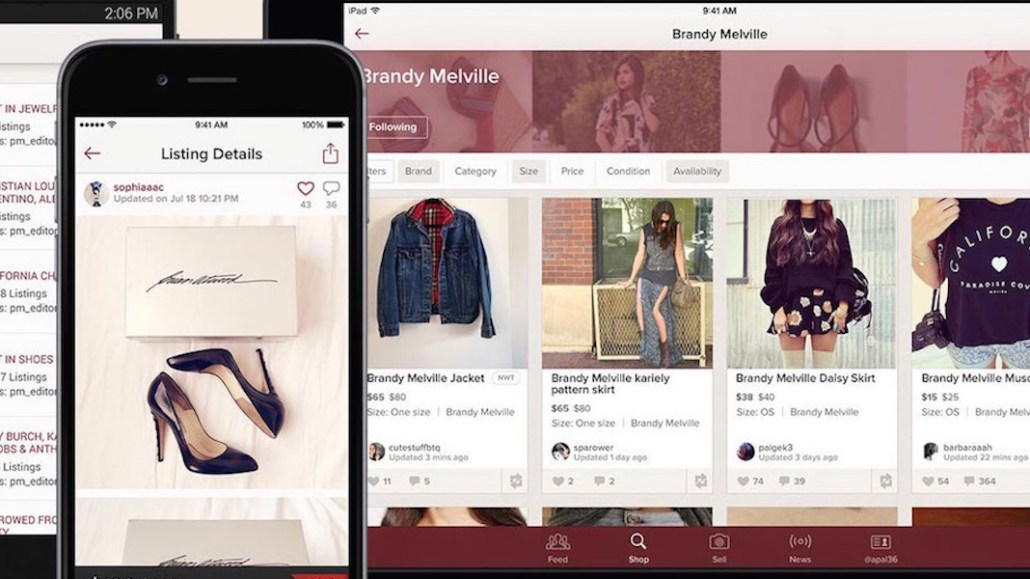Why Poshmark started its own seller fund to support loyal platform users

Resale platforms are nothing without their sellers, which is why Poshmark has started a fund and built engagement infrastructure to support them.
Poshmark started taking applications from eligible sellers on Thursday for the company’s second round of its Heart and Hustle Fund, a $500,000 pot of money that the platform plans to mete out this year. Every three months, the company will give $5,000 each to 12 sellers, and $500 grants to 130 sellers. On top of funding, winners also get to join a private Discord group with other grant recipients, as well as invitations to presentations and working sessions with the Poshmark team driven by the cohort’s interests.
Both new and long-time sellers are eligible, but a seller needs to have made at least 125 sales to be eligible for a $5,000 grant, or at least 10 sales for a $500 grant. Other requirements for both include having a rating of 4.5 or higher and an average ship time of fewer than three days.
For the past few months, the major social media platforms have been vying to attract and retain influencers as brands make them a pillar of their marketing strategy. This has led several players, such as Pinterest, Snapchat, and YouTube, to start their own creator funds. Poshmark seems to be taking a similar approach, albeit on a significantly smaller scale. Since resale platforms became more popular during the pandemic, sellers now have more options, which has platforms working to keep them loyal.
“Most sellers on marketplaces sell on more than one marketplace,” said Sucharita Kodali, vp and principal analyst at Forrester. “Buyers are important, but no buyer is going to buy without sellers.”
This is the latest move by Poshmark to keep buyers and sellers coming back since going public in January of this year. “Our first strategy is to focus on product innovation to continue driving user engagement which is fundamental to the retention of our user cohorts and GMV growth,” said Manish Chandra, CEO of Poshmark, in the company’s first-quarter earnings call in May.
In the first quarter of 2021, the platform introduced video listings for sellers, as well as seller shipping discounts. Poshmark had 4.5 million active sellers as of September of 2020, according to a spokesperson, but declined to give updated numbers. The company reported 6.7 million active buyers in the first quarter, up 18% from the first quarter of 2020. In contrast, ThreadUp reported having 1.29 million active buyers in its first-quarter earnings.
The funding also comes on the heels of Etsy’s acquisition of Depop, a U.K.-based fashion resale marketplace. “We have tremendous respect for Etsy management and what they have built and we view the Depop acquisition as validation of the massive, total addressable market for the resale category,” a Poshmark spokesperson said in a statement. “We are still in the early innings of resale and social marketplace growth and believe there’s room for multiple winners.”
Paige Walter of Milwaukee, Wisconsin, is one of the latest grant recipients. She started selling on Poshmark during the pandemic in March of last year as a way to clear out some of her and her mom’s clothing and earn extra cash. At first, she aimed to make about $500 a month to cover her rent.
“It snowballed from there,” Walter said, who now averages about $1,000 a month in profit from clothing she finds while thrifting.
She has used the grant to help pay for the paperwork for her LLC, new equipment for photos, eco-friendly mailers, and expand her inventory. She plans to buy a shipping label printer as well.
“The funding has given me room to breathe while I expand,” she explained. Walter currently also bartends “for the social interaction,” but says that that is more of her side gig. Poshmark has become her full time job.
For the first round of funding, Poshmark received more than 600 applications, with applicants from 40 states, ranging from users who were 18 to 70 years old, according to LyAnn Chhay, Poshmark’s svp of community.
The company plans to do a fall and winter cohort later this year as well. “When Poshmark established the fund, we wanted to provide eligible sellers with multiple opportunities for involvement,” Chhay wrote in an email. “That way, if a seller did not meet the requirements in one period, they always have the possibility to apply in the future.”
More in Marketing

Pitch deck: How Amazon is recasting Twitch as a core part of its CTV pitch
Amazon is positioning Twitch as a defining asset in its CTV ambitions.

Netflix transforms former mall department stores into experiential venues
The location in Dallas opens this week, and one at the King of Prussia mall near Philadelphia opened last month.

Future of Marketing Briefing: AI has created a new talent paradox in programmatic agencies
The job isn’t execution anymore. AI handles that. The job is judgement.








